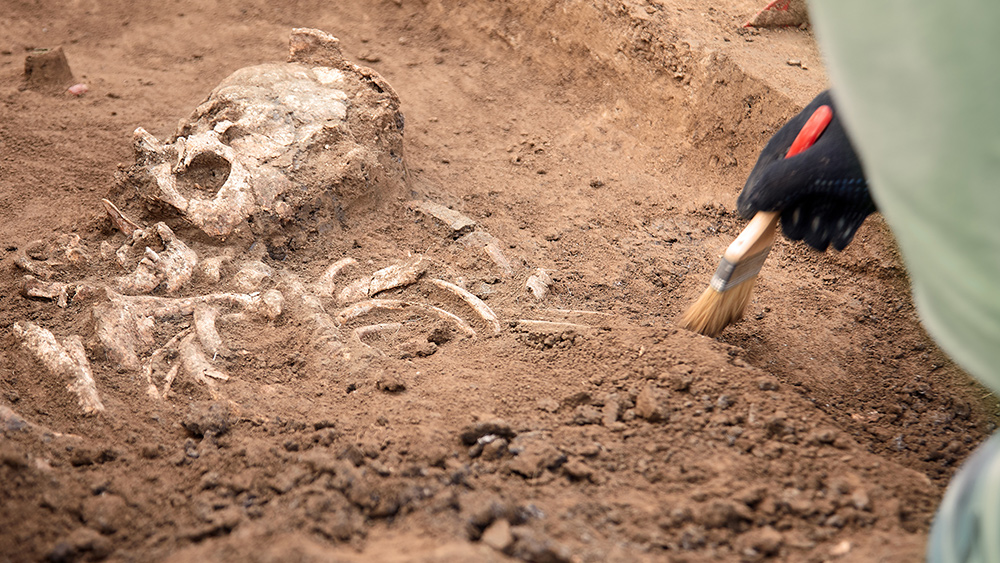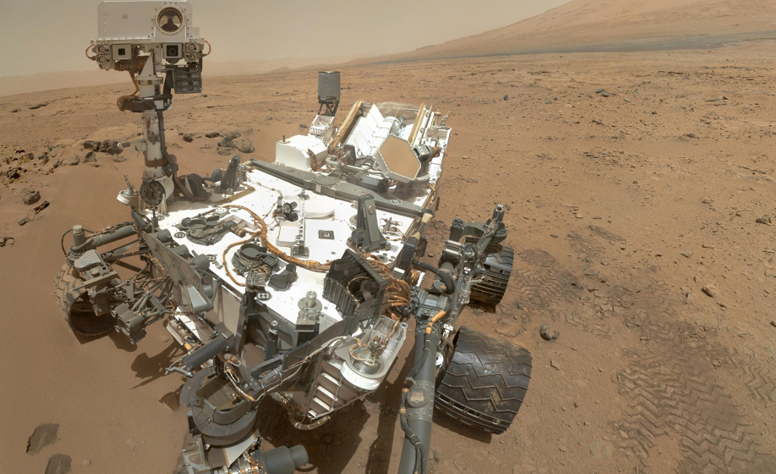Archaeologists discover earliest example of unique brain surgery procedure done 3,500 years ago
03/01/2023 / By Kevin Hughes

Archaeologists have discovered the earliest example of a unique brain surgery procedure, which dated back to 3,500 years ago.
The discovery came in the form of skeletons of two Bronze Age brothers unearthed at the ancient city of Megiddo in Israel, today the Tel Megiddo site. One of the brothers had a 30-millimeter square hole in the frontal bone of his skull that was surgically taken out. The findings served as the first example of trephination – also called trepanning, trepanation, or burr holing – in the Near East.
Trephination calls for cutting the scalp open, carving four intersecting lines in the skull using an instrument with a sharp beveled edge and utilizing leverage to make a square-shaped hole in the skull. One of the oldest known surgical procedures, trephination was believed to let evil spirits that caused disease out of the patient’s body. It was later refined as a way to relieve pressure on the brain, and is still being utilized today.
Archaeologist Rachel Kalisher, who headed the examination of the brothers’ remains, said one of the brothers had undergone an angular notched trephination. However, the lack of bone healing indicates that the patient died during or shortly after the surgery. Kalisher nevertheless remarked that this was the earliest example of trephination found in the region.
“We have evidence that trephination has been this universal, widespread type of surgery for thousands of years,” she said. “But in the Near East, we don’t see it so often — there are only about a dozen examples of trephination in this entire region.” (Related: Skulls from a cave in Spain suggest Stone Age people may have performed brain surgery, practiced human sacrifice.)
Brothers may have suffered from infectious disease
Kalisher also noted: “This uncommon procedure was done on an elite individual with developmental anomalies and infectious disease.”
Both brothers, who reportedly belonged to the upper class in life, died young. One brother was in his teens or early 20s, while the other died sometime between his 20s and 40s. Despite the age gap, the archaeologists determined that an infectious disease claimed the lives of the siblings.
Further analysis revealed that a third of one brother’s skeleton and half of the other brother’s revealed porosity, lesions and signs of inflammation in the membrane covering them. This led the team to believe that both of them had systemic and sustained cases of an infectious disease, such as tuberculosis or leprosy.
According to Kalisher, the advanced state of the lesions indicate that the men survived for several years despite the severity of their illness. However, she emphasized that even though some skeletal proof points to leprosy, it is hard to diagnose the exact cause of death by looking at ancient bones alone.
Moreover, the brothers’ tomb was decorated with high-quality food and fine ceramics, similar to other nearby high-status tombs in Megiddo. This implies that the brothers were not excluded from normal burial traditions due to their poor health. It also served as an evidence of their family’s wealth and status, which provided them with more opportunities to try uncommon treatments such as trephination.
Follow Discoveries.news for more about the latest archaeological findings.
Watch this video about giant skeletons being found inside Lovelock Cave in Nevada.
This video is from the High Hopes channel on Brighteon.com.
More related stories:
Ancient Egyptian mass grave with dogs, 8-year-old kid baffles archaeologists.
Archaeologists discover ruins of Mayan civilization in Guatemala using LiDAR technology.
Ancient human remains unearthed in Ethiopia older than previously thought, reveals study.
Sources include:
Submit a correction >>
Tagged Under:
ancient bones, ancient history, ancient remains, ancients, Archaeology, artifacts, brain surgery, breakthrough, discoveries, Israel, Megiddo, research, surgery, Tel Megiddo, trephination
This article may contain statements that reflect the opinion of the author
RECENT NEWS & ARTICLES
COPYRIGHT © 2017 ARTIFACTS NEWS



















